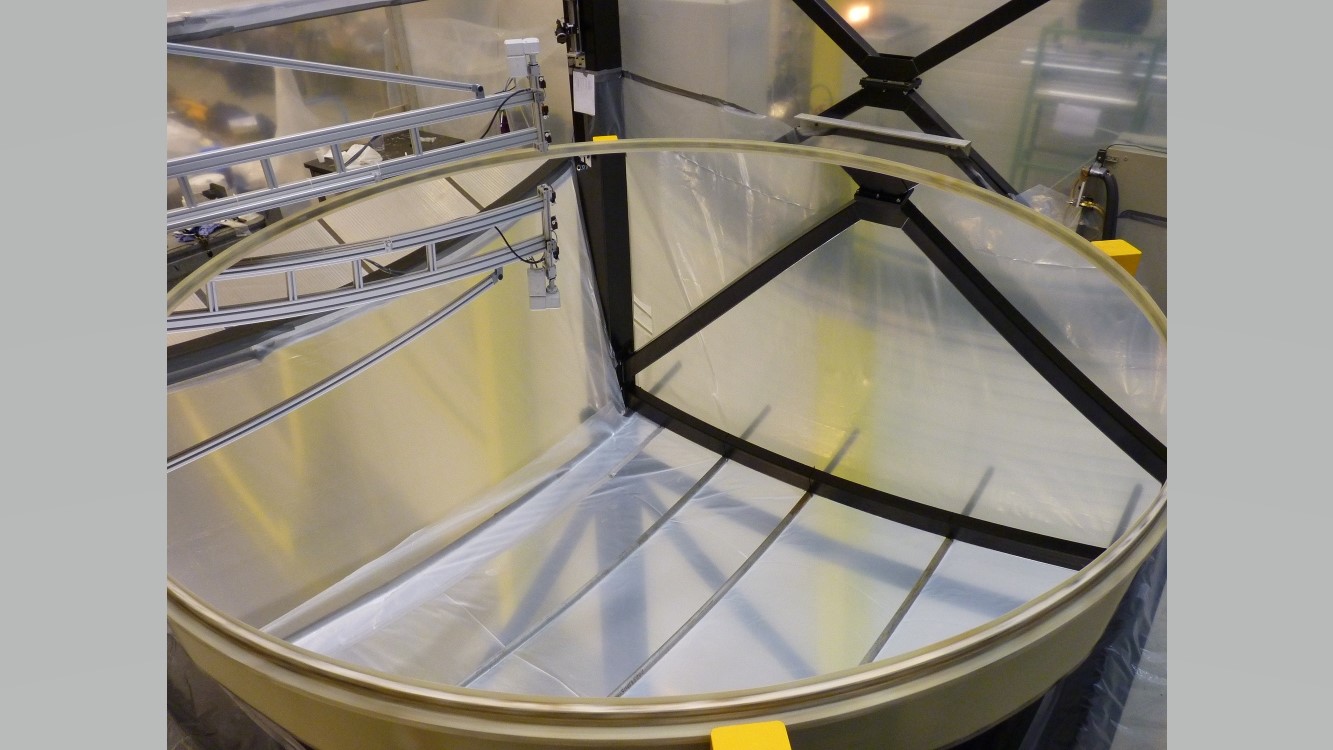World's largest liquid mirror telescope ready to observe
Astronomers must brave a 10-hour drive into the Himalayas to get there.

The world's largest liquid mirror telescope is ready to gaze at the stars.
Located at the Devasthal Observatory in India's Himalayas, at an elevation of 8,038 feet (2,450 meters), the four-meter International Liquid Mirror Telescope (ILMT) is the first liquid telescope to be built specifically for astronomy.
Most telescopes use glass mirrors, but as the ILMT's name suggests, its mirror is made from a thin layer of liquid mercury that floats on 10 microns of compressed air and rotates every eight seconds. "By way of comparison, a human hair is approximately 70 microns thick," Paul Hickson, an astronomer at the University of British Columbia who helped develop the telescope, said in a statement. "The air bearings are so sensitive that even smoke particles can damage them."
Related: Giant next-generation space telescopes could be built off Earth
The rotation causes the liquid mercury to form a parabolic shape like a contact lens, which shape is what allows the telescope to focus light from deep space. In fact, glass telescope mirrors are also parabolic, but shaping a solid material requires far more effort, thus liquid mirror telescopes are far more cost-effective than conventional ones.
The tradeoff is that the ILTM is fixed in a single position, so it only observes one strip of the night sky as the Earth rotates below it. But since the telescope will be hyper-focused on just one area, it's well-suited for spotting transient objects like supernovas and asteroids.
"The collected data will be ideally suited to perform a deep photometric and astrometric variability survey over a period of typically five years," Jean Surdej, project director and an astrophysicist at the University of Liège, Belgium, and the University of Poznan, Poland, said in the statement.
Get the Space.com Newsletter
Breaking space news, the latest updates on rocket launches, skywatching events and more!
Expected to begin science observations later this year, the ILTM will operate from October through June annually, closing during India's rainy season. The project is an international collaboration between institutions in India, Belgium, Poland, Uzbekistan and Canada.
Follow Stefanie Waldek on Twitter @StefanieWaldek. Follow us on Twitter @Spacedotcom and on Facebook.
Join our Space Forums to keep talking space on the latest missions, night sky and more! And if you have a news tip, correction or comment, let us know at: community@space.com.

Space.com contributing writer Stefanie Waldek is a self-taught space nerd and aviation geek who is passionate about all things spaceflight and astronomy. With a background in travel and design journalism, as well as a Bachelor of Arts degree from New York University, she specializes in the budding space tourism industry and Earth-based astrotourism. In her free time, you can find her watching rocket launches or looking up at the stars, wondering what is out there. Learn more about her work at www.stefaniewaldek.com.









